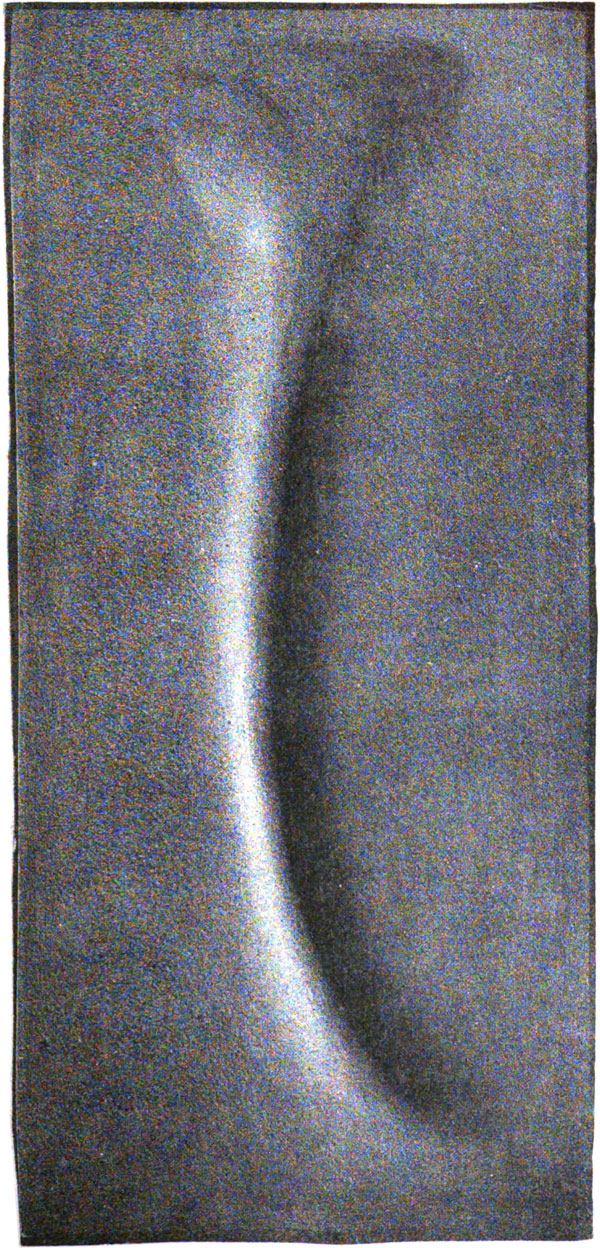on sheets of lead, 4

*
Plate VI, Effects of superficial expansion on sheets of lead.
Experiment No. 5. — After these experiments with sheets of lead it occurred to me to try zinc. For this purpose a sheet of that metal 15 inches by 12 inches, No. 16 gauge, was riveted to a plate of malleable iron of the same size and 1/8 inch thick. It is evident that the zinc could only be affected by the differential expansion of the two metals. ¶ The coefficients of expansion, according to the tables compiled by Kinnear Clark, are 1/61,200 for zinc and 1/147,420 for forged iron. After one heating in the oven from 62ºF. to 180ºF. the zinc had very perceptibly buckled, and had forced the iron plate, to which it was riveted, into a concave shape at the bottom. I now repeatedly heated the combined plates in the oven, but never to over 200º F., generally to much less. The zinc is now extremely convex, of a pretty regular curvature, rising about half an inch above the true plane. ¶ If the plate had been larger there is little doubt that the zinc would have arranged itself in folds and creases instead of rising in a domed form.
*
An Ink-photo from a cast of a butler's pantry sink, described in p. 15. The lead in this case was very strong, I should think about 10 lb. to the superficial foot.
illustrating Chapter IV. Mechanical effects of expansion by heat as determined by experiment on various materials.
ex Thomas Mellard Reade (1832-1909, *). The Origin of Mountain Ranges considered experimentally, structurally, dynamically, and in relation to their geological history. London, 1886
conclusions, if any, to come.
tags: butler’s pantry sink; lead; mountains; orogeny; T. M. Reade, The Origin of Mountain Ranges (1886)